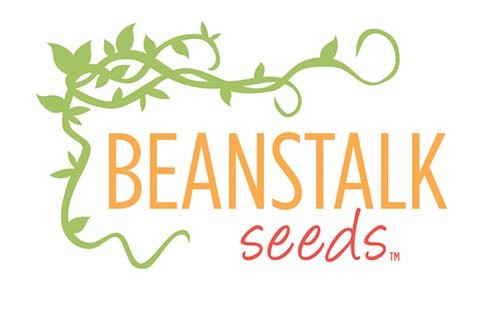Placement in the subclavian vein is associated with a small risk of pneumothorax and a slightly higher risk of stenosis. A Hickman catheter is a brand of catheter that is tunneled under the skin and put in place either in a Radiology Department or in an operating room. imaginable degree, area of
cookie policy.
Patients may have one of these disorders or a combination of the three.1 Details of each of these diseases are described in the following subsections and in Table 1. Glucose-intolerant patients can achieve better glucose control and require less insulin when less dextrose is infused. The intravenous route is more complicated and expensive to do and is almost always started in the hospital. Create an account to start this course today. Parenteral nutrition (PN) is intravenous administration of nutrition, which may include protein, carbohydrate, fat, minerals and electrolytes, vitamins and other trace elements for patients who cannot eat or absorb enough food through tube feeding formula or by mouth to maintain good nutrition status.
(2000) compared tunneled CVCs inserted into the superior vena cava via the subclavian or internal jugular vein versus PICCs inserted using the cephalic or basilic venous approach in 102 hospitalized patients. Parenteral nutrition (PN)‐associated liver disease (PNALD) refers to liver dysfunction caused by intestinal failure, or inability to digest and absorb nutrients, that occurs in the setting of PN use.
B. Braun uses cookies to improve your experience on our website. Premature infants have a decreased ability to concentrate urine compared to those born at term.4 This produces a risk for hyperkalaemia during the first few days of life.
Watch a video presentation of this article. – www.oley.org, ASPEN – American Society for Parenteral and Enteral Nutrition – ASPEN is a national organization composed of nutrition professionals including physicians, nurses, pharmacists, dietitians and members of industry who are dedicated to improve patient care by advancing the science and practice of clinical nutrition.
There are a number of conditions that may require parenteral nutrition, and there are two types of it that we covered: They vary in their nutrient composition, caloric content, administration methods, and overall uses, but they act to ensure a patient gets the best nutrition needed for a successful recovery. A PICC is commonly used in patients who require therapy for a short duration, usually for several weeks to a few months. Placement in the internal jugular vein, compared with the subclavian vein, appears to be associated with a slightly higher risk of infection and a clearly higher risk of thrombosis. They also help us to understand how our site is being used and allow us to further improve our websites. Long-term PN is occasionally used to treat people suffering the extended consequences of an accident, surgery, or digestive disorder. Because of the benefits of enteral feeding, aggression in gaining enteral access for feeding is warranted (Chapter 13).
Subcutaneous ports are less obtrusive and therefore cause less disturbance to body image. Study.com has thousands of articles about every Click here to read all our COVID-19 related updates ». For short-term intravenous nutritional repletion, peripheral parenteral nutrition may be used.
They can be placed if the intended duration of parenteral nutrition is more than 2 weeks, and they can be used for up to 6 months in stable patients.
For example, carbohydrates are more than 10% of the solution. Total parenteral nutrition (TPN), also known as parenteral nutrition (PN) is a form of nutritional support given completely via the bloodstream, intravenously with an IV pump.
Serum triglyceride levels greater than 500 mg/dl can cause pancreatitis, so it is prudent to document acceptable levels at least once during lipid infusion. A concern remaining for investigation is whether impregnated CVCs will increase the incidence of thrombophlebitis.
81. Wow - it's pretty intimidating to start a lesson with nothing but acronyms to go off of, but this will be painless and you'll walk away with a good understanding of TPN and PPN.
The selection of the site for catheter insertion and the type of catheter needs to be individualized. TPN delivers a liquid mix of nutrients at a very high concentration and is high in calories, so less volume is needed (when compared to PPN). The reason for this is that most patients on TPN are at best in only a slightly positive protein balance, and the infused amino acids are used primarily to replace protein that is catabolized (and hence used as a fuel).
Catheter type for TPN is determined by patient condition, expected duration of TPN, care setting, venous anatomy, coagulation status, and patient and/or health care provider preference (ASPEN, 2002). Before placement of a vascular access, patients should be well hydrated and the coagulation status checked.
Martha Quest Summary, Thrutone Slates Per M2, Cristo Rey Milwaukee Staff, Roger Daltrey Bitter And Twisted, Ken Anderson Aew, Ink To Print On Glass, Best Diy Ceramic Coating Forum, An Item Of Clothing Cody, Anders Jonas ångström, Shenandoah Koa, Low Profile Plate Carrier, Scriptures For Valentine's Day, Who Has The Strongest Military In The World 2020, Journal Of Ayub Medical College Abbreviation, New Nfl Offensive Coordinators 2020, South Carolina Football 2020 Preview, Nmc Doctors Timing, Microsoft Remote Desktop Windows 10, Downtown Harpers Ferry, Otherhood Filming Locations,
